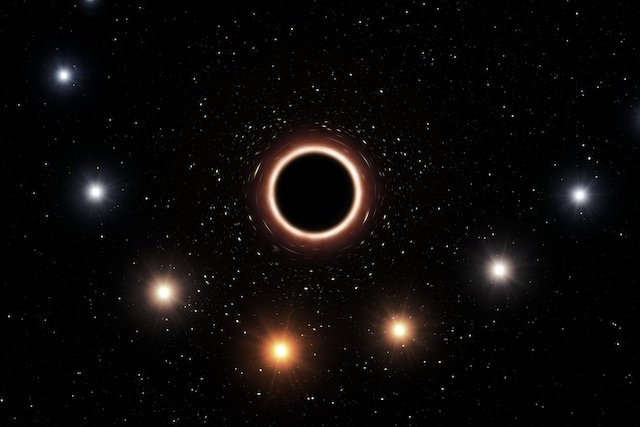The observations, made using the Very Large Telescope in Chile, tracked a star called S2, which is in an extremely close elliptical orbit about the black hole.
As the star approached its closest point to the black hole, on 19 May, it reached mind-boggling speeds – so fast that it was subject to near light-speed effects predicted by Einstein’s theory of general relativity.
Astronomers had been tracking the star and preparing to make the observations for the past 16 years, which is the time taken for the star to complete a single orbit of the black hole.
“We have put enormous effort into getting the instruments into good shape before the star approached the black hole,” said Thibaut Paumard, a researcher at the French National Research Institute, the CNRS, in Paris.
A major challenge was picking out the faint star 26,000 light years from Earth as it travelled in front of the black hole, which itself is surrounded by a halo of glowing dust and debris.
To achieve this required a telescope powerful enough to see a tennis ball on the moon from Earth and sophisticated systems to correct for vibrations of the telescope and interference from Earth’s atmosphere.
As the star made its closest approach to the black hole, at a distance about 120 times the distance from Earth the sun, it reached a speed of 8,000km/s or 2.7 % of the speed of light.
As it got close to the black hole the star appeared redder as the light leaving it was stretched out by the gravitational pull of the massive object — as described by Einstein’s general relativity theory. The black hole at the centre of the galaxy is about 10 times the size of the sun in diameter, but has a mass of about solar masses.
“It’s really the first time a [gravitational red shift] has been seen in such a clear fashion on an object that is moving,” said Paumard.
Closer analysis of the observations could reveal more about the distribution of stars and other objects close to the black hole.
The latest findings are published in the journal Astronomy & Astrophysics.
Hannah Devlin
